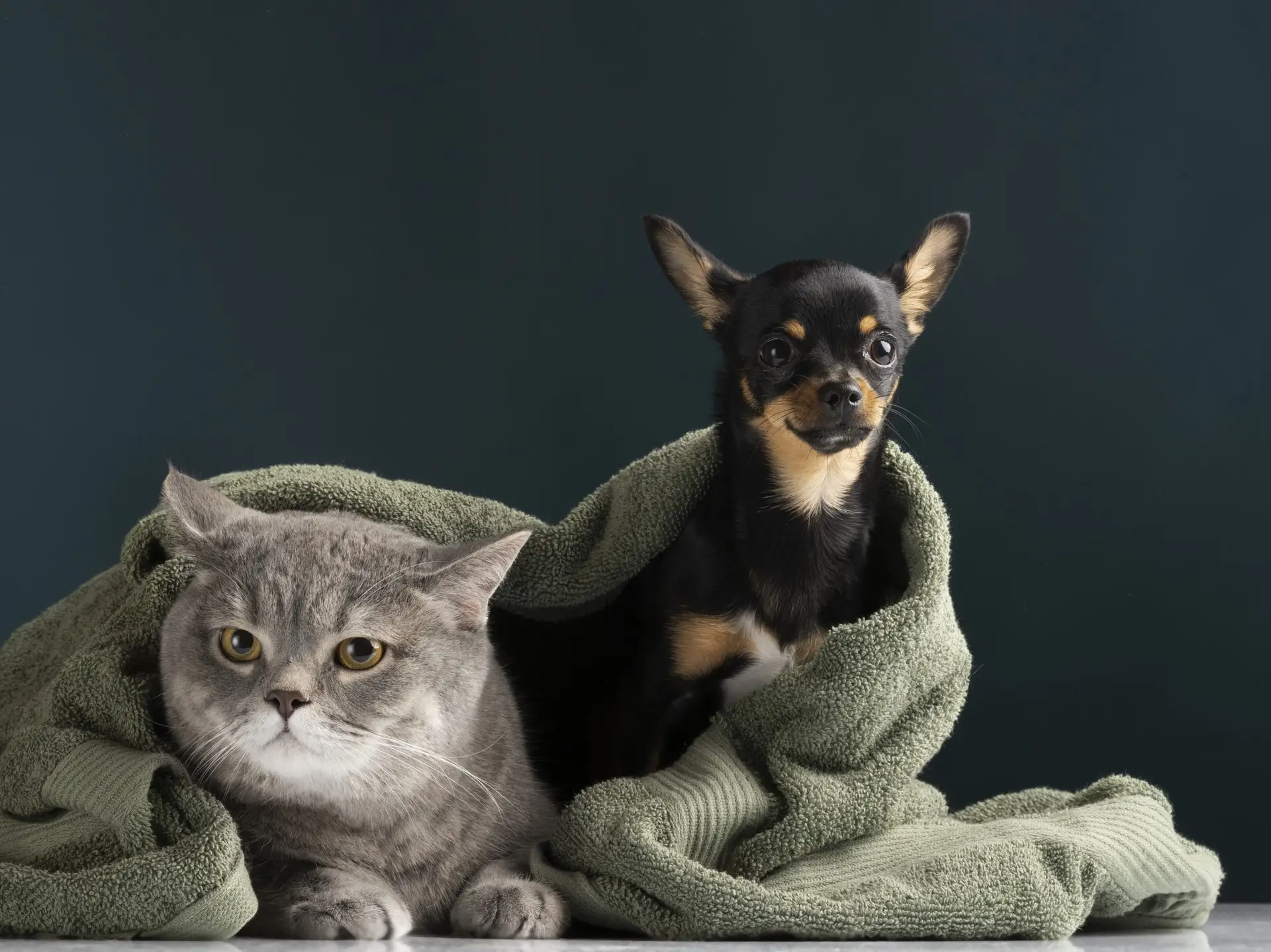Winter weather brings unique challenges for pet owners. Just like us, dogs and cats are susceptible to cold-related dangers. Taking simple precautions can ensure your pet stays happy, healthy, and safe throughout the colder months.

Common winter risks for pets
- Frostbite: The most common risk is frostbite, which can affect a dog’s paws, ears, and tail. These are areas with less fur and circulation, making them vulnerable to severe tissue damage.
- Hypothermia: This occurs when a pet’s body temperature drops dangerously low. This is a life-threatening condition that can occur if a pet is left outside for too long in freezing temperatures.
- Dehydration: In cold, dry air, pets can become dehydrated quickly, especially if their water bowl freezes over outdoors.
Tips for walking dogs safely in cold weather
- Limit Time Outside: On very cold days, keep walks short and to the point.
- Check the Paws: After a walk, check your dog’s paws for ice, snow, and de-icing chemicals, which can be irritating or even toxic if ingested.
- Dress Them Up: Consider a sweater or a coat for short-haired breeds, as they have less insulation against the cold.
Grooming & paw protection during winter
- Trim Paw Hair: Long hair between your dog’s paw pads can collect ice balls. Trimming this hair can help prevent them from forming.
- Paw Balm or Booties: Protect your dog’s paws from salt and chemicals with a pet-safe balm or consider using booties for extra protection on sidewalks.
- Don’t Shave: Avoid close shaves in the winter. A longer coat provides natural insulation against the cold.
Nutrition and hydration for colder months
- Adjust Food Intake: Active dogs who spend a lot of time outside in the cold may need a bit more food to maintain their energy and body temperature. However, if your pet is less active in the winter, you may need to reduce their food to prevent weight gain.
- Monitor Water Bowls: If your pet spends time outdoors, be sure to check their water bowl frequently to make sure it hasn’t frozen. Consider an insulated or heated bowl.
Indoor activities to keep pets active
- Puzzle Toys: These toys require your pet to use their mind to get to a treat. They are great for mental stimulation and for burning off a bit of energy indoors.
- Indoor Fetch or Hide-and-Seek: A few minutes of indoor fetch or hiding toys for your dog to find can be a great substitute for a long outdoor run.
- Training Sessions: Winter is an excellent time to teach your dog new tricks or reinforce basic obedience commands.



